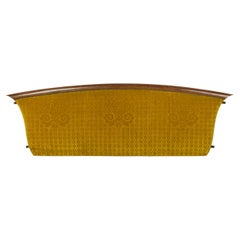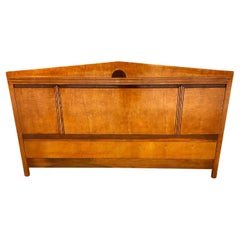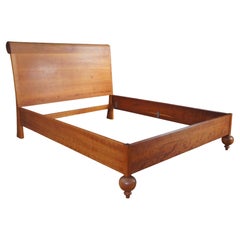Biedermeier Headboard
Antique 19th Century European Biedermeier Beds and Bed Frames
Metal, Bronze
Recent Sales
Late 20th Century Biedermeier Beds and Bed Frames
Satinwood
Late 20th Century Biedermeier Beds and Bed Frames
Cherry
Antique Early 19th Century Italian Biedermeier Wall-mounted Sculptures
Fruitwood
People Also Browsed
Antique 19th Century English Victorian Chaise Longues
Walnut
Antique 19th Century American American Classical Fireplace Tools and Chi...
Brass, Wire
Early 20th Century Japanese Taisho Lanterns
Bronze
Vintage 1970s Italian Mid-Century Modern Beds and Bed Frames
Wood
Antique 19th Century English Victorian Sofas
Mahogany
21st Century and Contemporary Portuguese Modern Sectional Sofas
Upholstery, Velvet
Antique Late 19th Century Italian Victorian Armchairs
Giltwood
Antique 19th Century Italian Baroque Rocking Chairs
Silver Leaf
Vintage 1930s Italian Art Deco Night Stands
Walnut, Burl
Antique Late 19th Century English Victorian Beds and Bed Frames
Porcelain, Mahogany
21st Century and Contemporary Portuguese Beds and Bed Frames
Fur, Wood
Antique 19th Century Caribbean French Provincial Beds and Bed Frames
Cedar
2010s American Modern Beds and Bed Frames
Fabric, Upholstery, Wood
Antique 19th Century English Children's Furniture
Cane, Wood, Teak
21st Century and Contemporary Italian Modern Beds and Bed Frames
Fabric
A Close Look at Biedermeier Furniture
The authentic Biedermeier furniture on 1stDibs is representative of the first modern European decorative style not dictated by the tastes of the aristocracy. Following the Napoleonic wars, a growing, wealthy urban middle class in the German-speaking states of Central Europe began to demand rights and privileges once granted only to nobles. To avoid trouble, the upwardly striving confined their political discussions to one another’s homes. And so the salon was born.
Cabinetmakers in cities such as Vienna, Berlin and Mainz began to offer goods that reflected the tastes and needs of the new class. The makers of Biedermeier chairs, tables and other furniture used little or no gilding, silver hardware or other lavish ornament. Ebonized trims are common on Biedermeier cabinetry, and neoclassical elements — lyre-shaped chair splats, carved scrollwork, table supports shaped like Greek columns. But the strongest aesthetic statement came from the wood — richly-grained, honey-colored, often book-matched veneers of walnut and fruitwood.
There are two iconic Biedermeier furniture forms, both made to outfit rooms designed for conversation. One is the sofa, deeply upholstered with a strong, architectural wooden frame. The second is the circular pedestal table, which stood at the center of the room, offering a surface on which to place coffee and cake services; or to roll out a map, or sketch out ideas on paper.
“Biedermeier” was originally a derogatory term — it derives from the pen names of two German magazine writers who mocked bourgeois manners. Looking at the elegant and refined antique, new and vintage Biedermeier furniture offered on 1stDibs, that is now an amusing irony.


